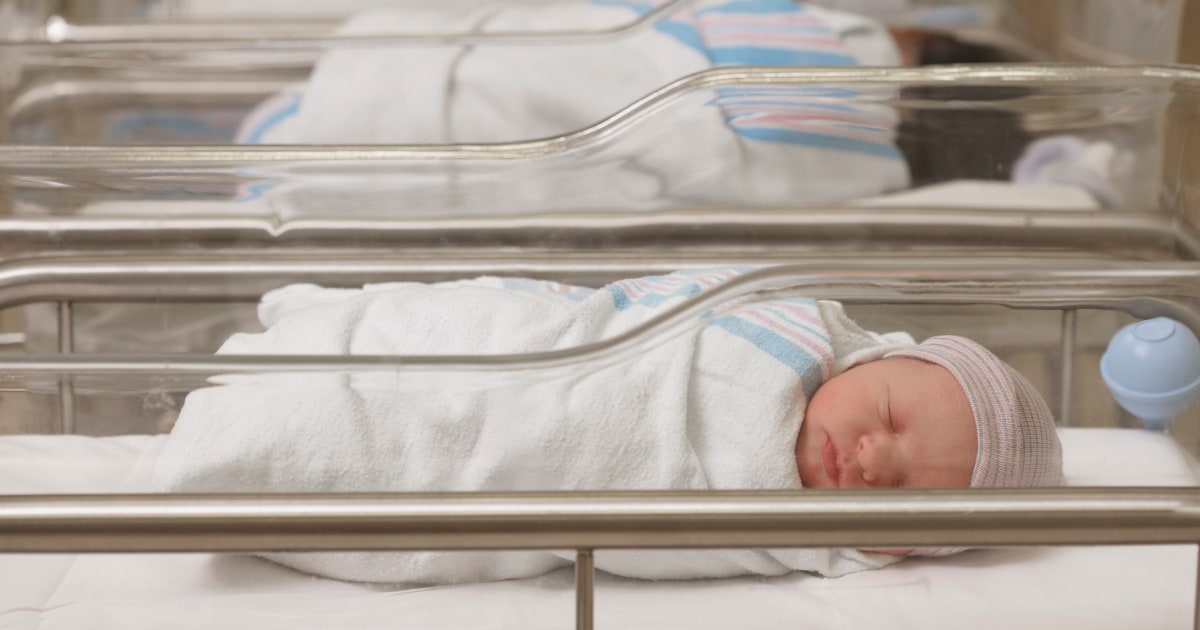By Kaitlin Sullivan - NBC News
The U.S. teen birth rate hit another record low last year, with signs there may not be much room for improvement, according to a report released Thursday by the Centers for Disease Control and Prevention.
According to the report, the birth rate among teenage girls fell by 3% in 2022, a smaller decline than in previous years. Since 2007, the adolescent birth rate has declined by about 8 per cent per year. Last year's smaller decline could indicate the nation is reaching a plateau thanks to years of progress, experts say.
[How Dozens of Babies Have Suffocated to Death in These Children's Beds in the Absence of Firm Regulations]
"If there are many states where rates are already low, they hit bottom. They can't go any lower," said the report's lead author, Brady Hamilton, a statistician and demographer at the CDC's National Center for Health Statistics. Hamilton noted that the data in the new report is provisional and will be updated when final figures are available for 2022.
Access to both contraceptives and comprehensive sexuality education has driven the sharp decline in teenage births, which have fallen by nearly 80 per cent from the early 1990s.
South Carolina Senate Approves Abortion Ban After Sixth Week of Pregnancy
May 24, 202300:19
"The declining birth rate, especially among teens and twenty-somethings, is positive, because many of these pregnancies are unplanned," said Karen Guzzo, director of the Carolina Population Center at the University of North Carolina, Chapel Hill. "This means people have children when they want to," he added.
For many, that means having children later.
Birth rates in women aged 35 to 39 rose 2% in 2022, according to the report. For women aged 40 to 44 – who have had almost continuous increases since 1985 – the birth rate increased by 4%. The birth rate for women aged 45 and over increased further, by 12 per cent, although the total number of births to women aged <> and over remained low.
[These are the most popular baby names for boys and girls in America]
According to Joshua Goldstein, director of the Berkeley Population Center at the University of California, Berkeley, waiting to have children is a trend seen in all countries with low or moderate fertility rates, such as most of Europe.
That's usually good, but researchers wonder why it's happening.
"It probably means more women are having children when they want to have them. They've had more opportunities to get a better education, find the right partner and excel in their careers," Goldstein says.
U.S. records five deaths of children forgotten inside cars so far this year
June 1, 202300:33
The CDC report included data from more than 99% of birth records for babies born in the U.S. last year. The report revealed that, overall, the birth rate declined marginally, less than 1%, in 2022.
Aside from a small uptick in 2021, the number of babies born in the U.S. has continued to fall since 2007. Since that year, birth rates have consistently remained below the rate needed for a generation to replace itself.
Goldstein says he's not worried that there aren't enough fathers in the United States.
[Babies born for the first time in the UK with the DNA of three people]
"The important thing is not the size of the next generation. It is the contribution that generation can make. The fact that women can have children at the age they want and invest in them is a good thing," she explained.
The data also doesn't reveal clues about how many people choose not to have children. Since people – both men and women – wait until an older age to have children, it will take years of tracking population data to determine whether or not people give up having children.
"This conversation always comes around the question of why women choose not to have children, but young men don't have children either," Guzzo said, noting that young men often don't feel ready to be parents, often for economic reasons.
Study reveals how marijuana use affects pregnancy
May 17, 202300:52
"It's not that women are too focused on their careers. This is a story about what happens when young people try to make a transition in society and whether or not they have the resources to build another generation of people," he explained.
The number of women of childbearing age is also declining in the United States.
"Most importantly, the age structure of the U.S. population is changing. The age structure is very different compared to a decade or two ago. The number of women of reproductive age is declining," said Feinian Chen, a sociology professor at Johns Hopkins University.
[Scientific Community Finds New Answers to Sudden Infant Death Syndrome Factors]
Where it differs is among immigrants. Younger immigrants who move to the United States and have children explain why birth rates are much higher among Asian and Hispanic women than among American Indians and Alaska Natives and black and white Americans, Chen explains.
Total births among American Indian/Alaska Native and white women fell by 3 percent, and the number of babies born to black mothers fell by 1 percent. Birth rates among Asian women increased by 2%, and the number of babies born to Native Hawaiian or Pacific Islander and Hispanic mothers increased by 6%.
"Immigrants have long been propping up our population rates," Guzzo said.








